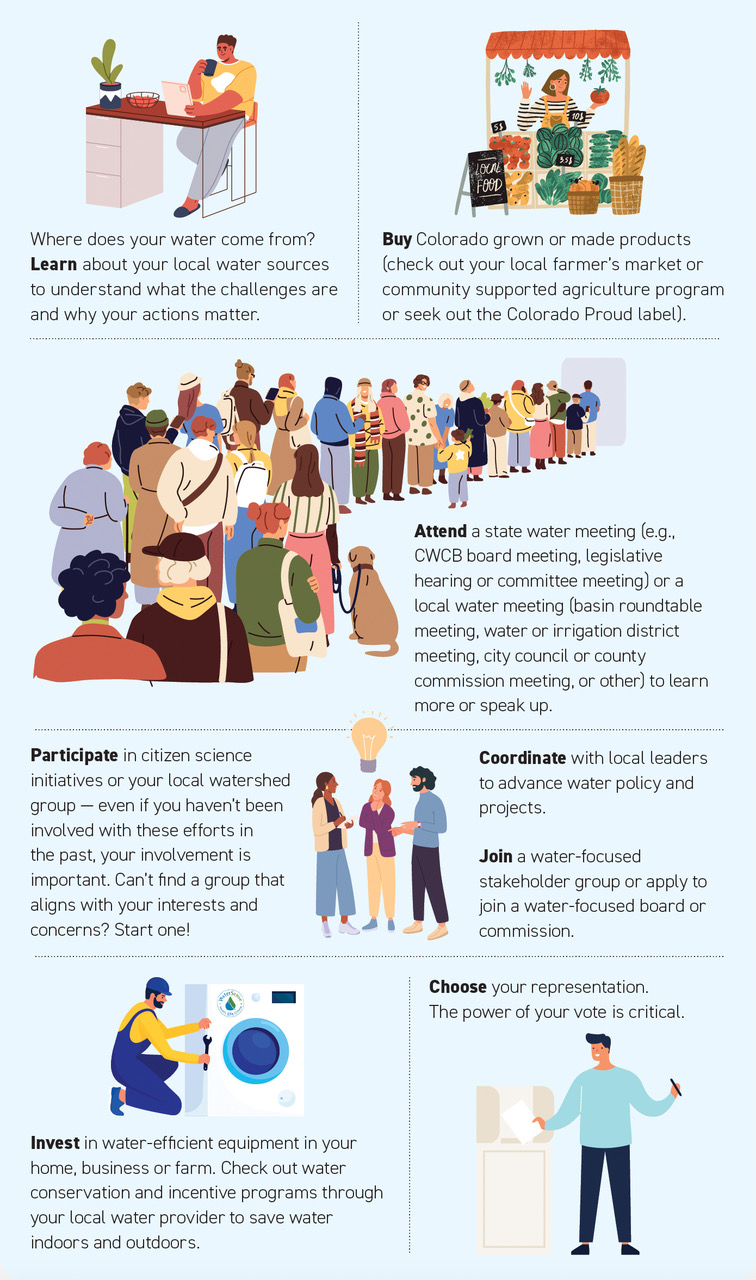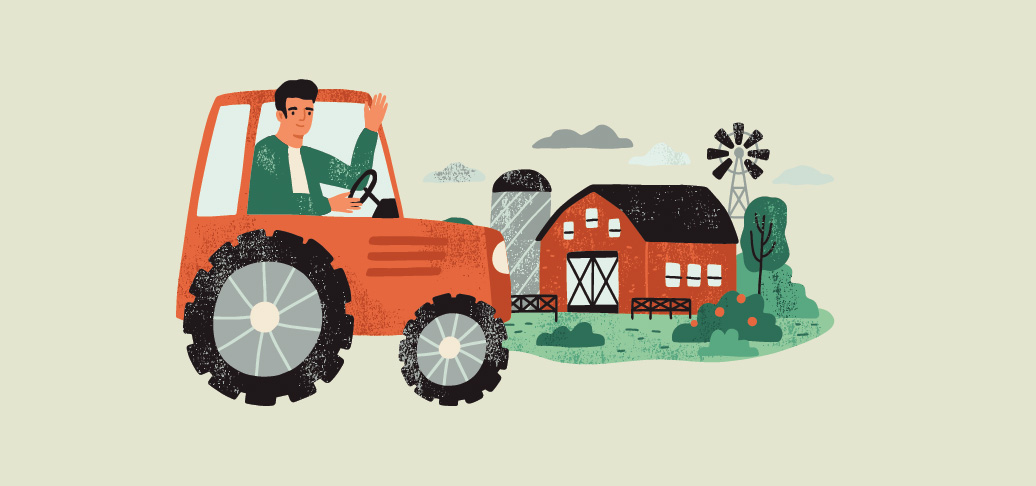How to Use and Implement the Water Plan
The new Colorado Water Plan relies on people of all sorts, all across the state, to get things done.
“The water plan really sets a shared vision for all of us in how we can meet our water challenges into the future,” said Lauren Ris, deputy director of the Colorado Water Conservation Board, on a panel at the Colorado Water Congress Annual Convention in January. “We all have a role in shaping water policy and I think this water plan illustrates that we all have a role in taking action to face the challenges we’re faced with as a state.”
Want to help? There are actions that you can take to help address Colorado’s water risks. The water plan asks readers to “use the plan as a platform to become more engaged and take action to advance the vision.” There are limitless actions that you can take, but the water plan calls out 50 ideas (see Chapter 6 of the plan for the full list), many of which could be supported by water plan grants managed by the CWCB.
Where to start? Here’s a small selection of actions we’ve adapted from the plan based on the role you play.
IF YOU ARE AN INTERESTED COMMUNITY MEMBER

IF YOU ARE AN AGRICULTURAL PRODUCER

Take efficiency to the next level. Irrigation efficiency improvements mean more water delivered directly to crops when they need it most, often resulting in higher yields. Similarly, improvements to diversion and conveyance infrastructure can increase water deliveries. Note that return flow timing and amount may be affected by efficiency improvements.
Invest in healthy soils to boost the resiliency of agricultural systems, including water use efficiency. Soil health can also benefit crop growth and may increase profitability. Bonus: Many soil health practices, such as conservation tillage and cover cropping, do triple duty by reducing erosion to improve water quality and store carbon in soils to make agricultural lands a greenhouse gas sink rather than a source.
Rehabilitate and replace old infrastructure, diversion structures and storage. Inefficient diversions may prevent you from diverting your full water entitlement. Rehabbing aging reservoirs can mean fully utilizing water rights and storing additional supplies. Tip: Look into ways to partner and receive funding through multi-benefit projects that increase fish habitat connectivity, provide recreational boat passage, and update agricultural infrastructure.
Is a change in crop type worthwhile? If you often experience water shortage, innovation in crop genetics and crop selection may provide a more resilient commodity.
Engage! Make your voice heard in planning discussions and speak up to bridge the urban/rural divide and engage the community.
IF YOU ARE A LOCAL GOVERNMENT OR A WATER DISTRICT

Advance your community’s understanding of water through outreach and education, engaging community members who don’t traditionally participate in water issues. Ideas: Cover basics like where your water comes from to bring your community up to speed. Focus on water efficiency, reuse, or projects that explore ways of doing more with less to demonstrate strategies that others can implement. Promote strategies for agricultural resilience to educate people on local food production.
Develop an actionable water efficiency and drought plan that includes trackable metrics and strategies that are implementable and appropriate for the community.
Go green. Green infrastructure for managing stormwater, such as rain gardens, green roofs, and vegetated swales can slow runoff and improve its quality while creating green spaces in urban areas.
Get the community out on the water by creating new opportunities for water-related outdoor recreation.
Prioritize healthy forests. Boosting and maintaining forest health by implementing projects in fire-prone forests across governmental boundaries can protect critical water supplies and result in resilient watersheds.
Reconnect floodplains to waterways to slow flood flows, improve water quality, and enhance fish and wildlife habitat.
IF YOU ARE AN ACADEMIC INSTITUTION OR A NON-GOVERNMENTAL ORGANIZATION

Look into public-private partnerships. These partnerships can help NGOs and academia fund research and work while the business community promotes innovation.
Help with efforts such as data collection, project implementation, analysis and education. NGOs can often form strong, trust-based relationships with communities that governments can’t.
Expand your network and share your connections. This can include working with the business community to identify adaptive technologies, identifying insights on adaptive practices by engaging Indigenous partners and cultures, or working with students on innovation challenges.
Develop an innovation incubator to foster new thinking around critical Colorado natural resource issues (water, wildfire, forest health) through education, technology accelerators, etc.
Go for the gold by applying for grants, or help disseminate grant application information and seek opportunities to align with other local initiatives to leverage funding and advance the dialogue around water.
Engage your community through activities such as citizen science and local watershed groups. Watershed planning relies heavily on the site-specific knowledge and ideas of individuals. Engaging with citizens not traditionally involved in watershed planning will be key.


 Print
Print